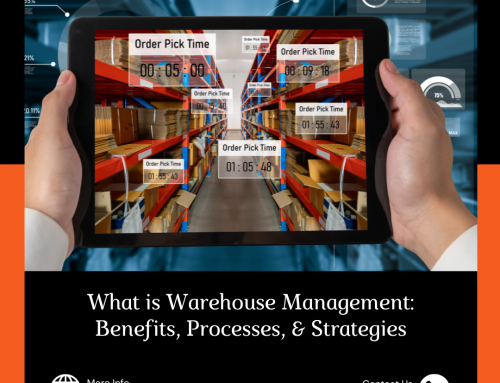In the ever-evolving landscape of eCommerce, the journey from 'click to doorstep' involves intricate operations that go beyond the digital interface.
Share This Story, Choose Your Platform!
In the ever-evolving landscape of eCommerce, the journey from ‘click to doorstep’ involves intricate operations that go beyond the digital interface. Warehouse management plays a pivotal role in ensuring seamless order fulfillment, inventory control, and customer satisfaction. In this comprehensive exploration, we’ll delve into the art of warehouse management, uncovering the strategies that drive eCommerce excellence behind the scenes.
-
The Crucial Role of Warehouse Management
At the heart of every successful eCommerce operation lies an efficient warehouse management system. This encompasses everything from receiving and storing inventory to order picking, packing, and shipping. The ultimate goal is to ensure products are accurately and promptly delivered to customers, all while optimizing resources and costs.
-
Streamlining Inventory Control
Effective warehouse management begins with streamlined inventory control. Real-time tracking of inventory levels, stock turnover rates, and demand patterns allows for accurate forecasting and prevents overstock or stockouts, ensuring a healthy balance between supply and demand.
-
The Power of Data-Driven Insights
Warehouse management leverages data-driven insights to make informed decisions. Advanced analytics can uncover trends, such as peak shopping seasons or popular products, guiding inventory planning and optimizing storage space.
-
Efficient Order Fulfillment
Order fulfillment is the backbone of customer satisfaction. A well-organized warehouse ensures that orders are accurately picked, packed, and shipped in a timely manner. Automation, such as barcode scanning and RFID technology, can enhance accuracy and speed in this process.
-
Inventory Segmentation for Efficiency
Categorizing inventory based on factors like popularity, size, and demand frequency allows for optimized storage and faster order picking. High-demand items can be placed in easily accessible locations, reducing picking times and enhancing efficiency.
-
Seamless Integration with Technology
Modern warehouse management is intertwined with technology. Warehouse management systems (WMS) and software enable real-time tracking, automated alerts for low stock levels, and data-driven decision-making, enhancing overall efficiency.
-
Just-In-Time Inventory
The just-in-time (JIT) inventory approach minimizes inventory storage costs by ordering products only as needed. While this reduces warehousing space, it requires robust coordination with suppliers to ensure timely deliveries.
-
Effective Returns Management
Returns are an integral part of eCommerce. An efficient returns management process ensures that returned items are inspected, restocked, or disposed of appropriately. Handling returns promptly and professionally enhances customer satisfaction.
-
Labor Management and Training
Efficient warehouse management also involves managing the workforce effectively. Proper training ensures that employees understand the layout, inventory categorization, and order fulfillment processes, minimizing errors and increasing productivity.
-
Sustainable Warehousing Practices
In an era of sustainability, eCommerce warehouses are embracing eco-friendly practices. From energy-efficient lighting to optimized packaging to reduce waste, sustainable warehousing aligns with environmental values and reduces operational costs.
-
Flexibility in Fulfillment Models
Different products and markets require varying fulfillment models. Whether it’s direct shipping from suppliers, using third-party logistics (3PL) partners, or employing dropshipping, flexibility allows businesses to cater to specific customer needs.
-
Continual Process Improvement
The art of warehouse management is a continuous journey of improvement. Regularly assessing key performance indicators (KPIs), analyzing data, and seeking feedback from employees contribute to ongoing operational enhancements.
In Conclusion: Orchestrating eCommerce Excellence
While customers experience the final outcome of eCommerce transactions, the art of warehouse management operates behind the scenes, orchestrating seamless order fulfillment, accurate inventory control, and efficient processes. By optimizing inventory, embracing technology, and prioritizing customer satisfaction, businesses can elevate their eCommerce game and deliver excellence in every package.
Warehouse management is more than storage and logistics; it’s the backbone of customer loyalty, brand reputation, and operational efficiency. As eCommerce continues to reshape the retail landscape, mastering the art of warehouse management remains a critical pillar of success.
Elevate eCommerce success with Purple Cow‘s Warehouse Management expertise. From inventory control to seamless order fulfillment, we optimize behind-the-scenes operations for excellence. Master the art of warehousing for customer satisfaction and operational efficiency.
Share This Story, Choose Your Platform!
In This Blog:

















